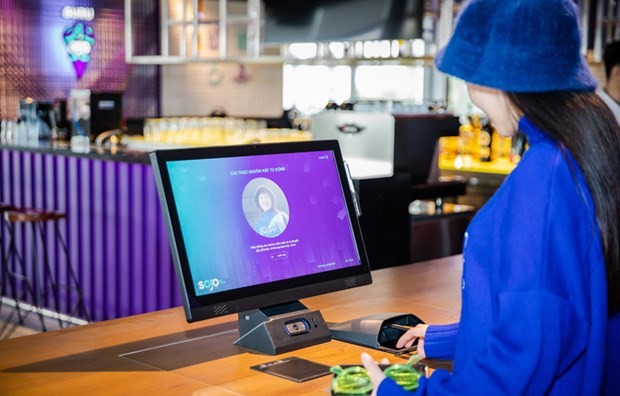(VOVWORLD) - As Vietnam chooses to flexibly adapt to the COVID-19 pandemic, 2022 is a pivotal year for tourism businesses. Using digital technology to control the epidemic and increase customer convenience is the obvious way forward, according to Mr. Hoang Viet Tien, Head of Strategic Advisory for the Insider Group, who will now talk to VOV about digital transformation and the recovery of the tourism sector.
 Guests can self-book and check-in at SOJO Hotel Ga Hanoi without having to go through the reception desk (Photo: VNA) Guests can self-book and check-in at SOJO Hotel Ga Hanoi without having to go through the reception desk (Photo: VNA) |
Thank you, Mr. Tien, for joining us on VOV’s Digital Life. Given the changes in the world over the past two years, what do think about the potential and challenges of Vietnam's tourism industry?
Although the 2-year pandemic has really challenged the hotel-tourism industry, there is a very good prospect for recovery in Vietnam, with 80% of customers being Vietnamese and foreigners living in Vietnam. Applying IT to tourism services is a way for tourism businesses to survive and improve the customers’ experience.
Historically, every epidemic or other economic crisis has affected tourism and hospitality. According to a survey conducted by Savills, a global real estate services provider, the number of foreign visitors fell 8% during the SARS epidemic in 2003 and 12% during the global financial crisis in 2009. What has happened over the past 2 years is nothing new. But consumer trends have been changing during the pandemic and businesses face a challenge in finding the right products. Travel habits have changed because people are prioritizing their health.
In light of technology trends in 2022, what new products and services are needed to meet the changing demand of tourists?
I think with the development of new technology and new consumer habits, new products and services are inevitable. “Touchless” hotels will optimize the customer experience both online and offline. Software to support effective hotel operations is ready for the tourism sector’s recovery. To stimulate consumer demand and reach customers, more efficient access channels are needed to exploit the domestic market and prepare to welcome larger numbers of foreign tourists. Small group tours, short trips, last-minute bookings, close-to-nature tours, and culinary culture tours should be flexibly developed.
Why is digital transformation of the sector urgently needed now?
Over the past two years, growth of the tourism and travel industry has been severely hurt. The 2021 third-quarter report by CBRE, a global leader in commercial real estate services and investments, showed that the average occupancy rate was just 26.2% and revenue per room was only 24.7 USD per night. These alarming figures highlight the urgency of speeding up digital transformation. Travel businesses have been implementing various solutions to establish their digital presence and deliver better digital experiences for their customers.
How will this digital transformation affect the recovery of Vietnam’s tourism industry?
Immersing itself in innovation and transformation will help shorten the recovery of Vietnam’s tourism-hotel industry. The recovery will depend on many factors, but we should focus on these things:
First, businesses should concentrate on the domestic tourist market, whose revenues in 2019 totaled 10 billion USD.
Second, businesses should consider a new pricing model rather than simply reducing prices or launching short-term promotions to stimulate demand.
Third, it is a good time to adopt digital technologies and create a ready-made foundation to serve international tourism when it revives.
Fourth, we need to create new experiences for customers both online and offline.
Finally, the State should support the digital transformation of the industry.
Thank you for taking the time to talk to VOV’s Digital Life! That was Hoang Viet Tien, Head of Strategic Advisory for the Insider Group.